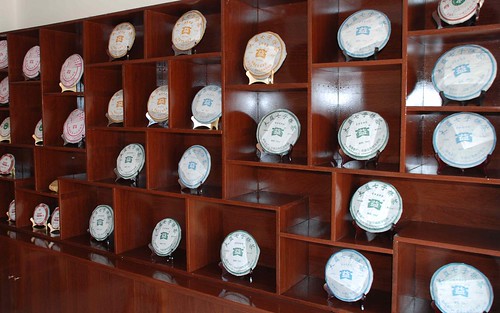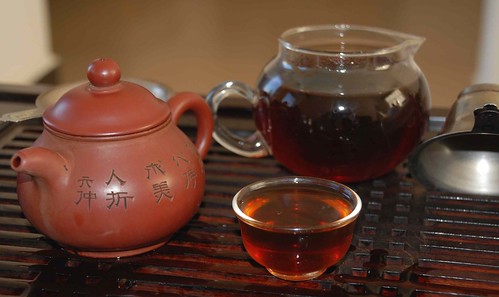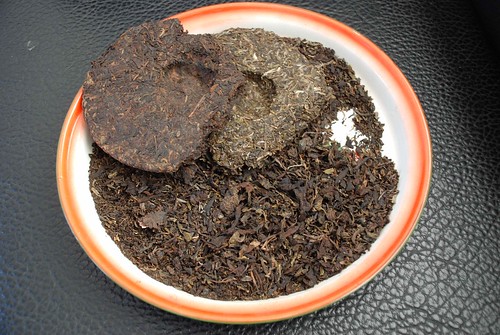
Those who know me are aware that I’ve abstained from posting on this blog about a big part of my life, which is my involvement in the tea industry and my infatuation with puer tea. The main reason for that is that I usually posted my tea rants on the LJ Puer Tea Community (http://community.livejournal.com/puerh_tea), which is the most lively English forum out there and a must read for any wannabe aficionados.
Unfortunately, politics have intervened recently. While the Chinese internet has opened up in a lot of ways recently, many foreign-hosted sites that had grown popular with Chinese bloggers have been blocked from the mainland, including Live Journal.
So the bad news is now I can’t post on my favorite forum anymore, but the good news is that now I will start to post more tea related articles here. Besides, I’ve been really slacking in keeping this blog up to date recently.
I’m not going to bore everyone with detailed tasting notes. Instead, I will write a bit to introduce the background of my favorite tea, and some cool things that are going on in the market and the culture of it. As I haven’t had time for much else recently anyway, the next few posts should follow in that fashion.

Puer tea is one of the most ancient forms of tea out there. It is produced from a special variety of tea that so far only grows in the mountains of southern Yunnan Province. Certain bacteria that reside in the leaf cause a complex chemical process over the years, turning the tea from a strong, bitter drink to a smooth, earthy infusion. The best teas have been carefully aged for decades, and can command thousands of dollars on the market, giving puer such appellations as the ‘drinkable antique’ and the ‘wine of teas’. Of the some 3,000 types of tea out there, puer has the most complex array of flavors, and is probably the most difficult tea to master.

Southern Yunnan is likely the birthplace of tea. Ancient ancestors of the Khmer peoples are believed to have begun cultivating it from local wild trees over 2000 years ago, from where it piggy-backed its way to the rest of the world along the old salt trading routes.

Ancient traders would steam and press the harvested leaves into brick and gum-drop shaped cakes to ease packing and storage, in a tradition that continues to this day. Along the journey, over long periods and highly variable weather conditions, the tea would take on a much richer flavor. This was one of the key elements in the spread of tea to the world. If it lacked the aging properties like most modern teas, it never would have survived the long journeys across the ancient trading routes to the end consumer.
Cantonese traders caught on to these special properties, and were storing the tea in large warehouses as early as the Qing Dynasty. Puer tea collection has always been a popular pursuit among the well-to-do of the overseas Chinese communities, especially in the Pacific region.
Until a few years ago, due to a lack of interest and a steady supply of good, cheap product from state run factories, puer was considered the poor, unkempt step-brother in the world of tea. But back then, all tea was pretty cheap, as China’s rich were chasing after Swiss watches, French wine and European luxury cars. One of the positive effects of China’s continuing economic growth is that many people are tracing back the roots of their tradition, and a cultural revival of sorts is taking hold as people find a totally Chinese outlet for their consumer habits.
This has led to a revival of puer tea, which is collectible and investment-worthy like fine wines. Puer has now for the third time in its storied history taken its place as a coveted connoisseur item, and prices are shooting through the roof as investors seek shelter from the growing bubbles in the property and securities markets. Will this recent market craze last? Probably not. But I think that puer is here to stay, and besides, it’s just so damn good…
No comments:
Post a Comment